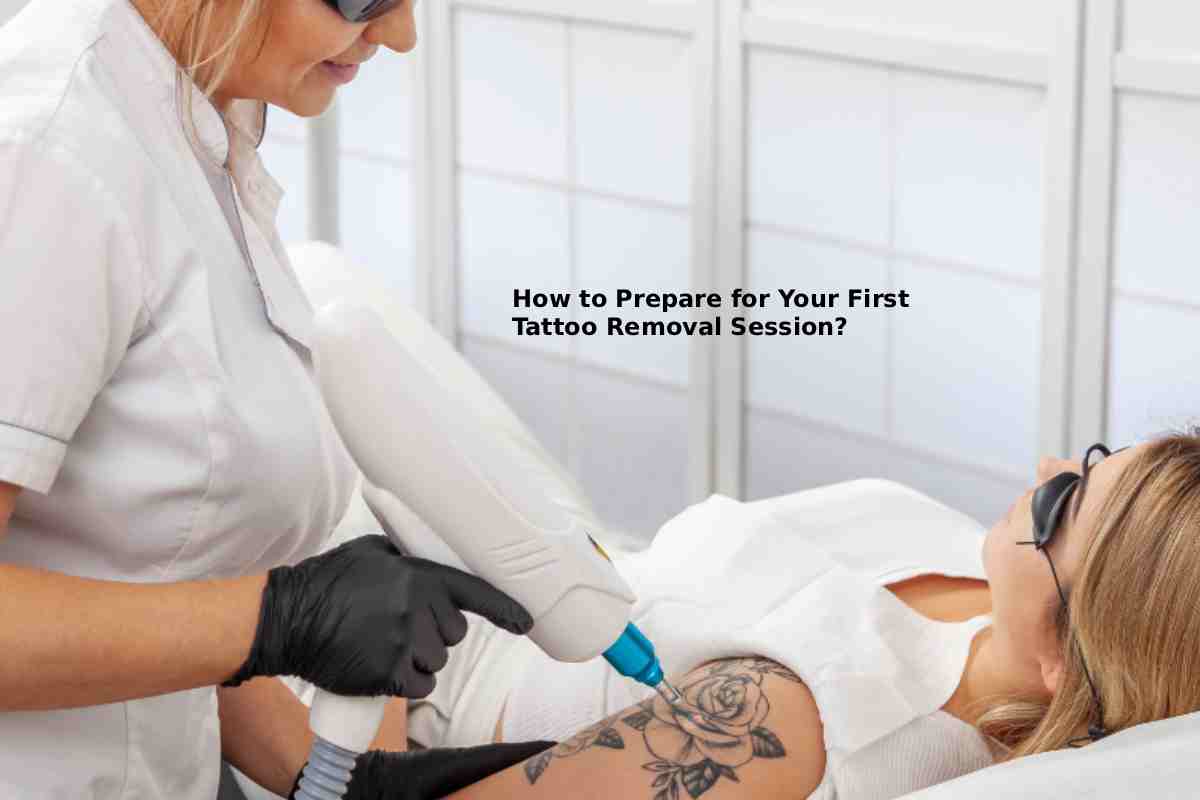
Tattoos can be quite exhilarating to get done, however, getting them removed can be overwhelming when it is your first session. And tattoo removal does not only include going to the clinic, preparation is a major part in terms of comfort in the procedure itself and the post-procedure effect on your skin. Learning what to anticipate before you start can ease the anxiety, minimize risks, and help you guarantee you get the best results of each session.
1. Schedule and Consultation Matters
Begin with a proper consultation at a licensed clinic. Your provider will:
- Evaluate your tattoo and skin: Certain factors such as color, size, depth and skin tones influence the success of removal.
- Advise on a suitable type of laser and proper sessions: Stubborn colors can be advised to get treated by modern use of picosecond lasers.
- Check out medical history and skin care products used: Some drug (such as blood thinners or acne medication) may affect the healing process.
- Establish reasonable expectations of fading and recovery: It may not be possible to remove it completely, particularly with bright colors or multiple layers of tattoos.
- Talk about pain management: Pain management by using numbing cream, cooling devices or other such comfort measures can be provided.
- Offer pricing information and package of sessions: This pricing knowledge is required in order to plan the whole course of the treatment.
- Tell about pre- and post-care: Sun avoidance to post-care regimens, adherence to directions is key to results.
- Resolve your concerns and questions: A good provider leaves you having no concerns and answering the questions before getting you started.
2. Avoid Sun Exposure Ahead of Time
Before the first session, keep skin with tattoos covered and out of the sun or tanning beds for at least 2-6 weeks. Tanned skin becomes more sensitive and prone to burns and scarring as well as to undesired pigmentation. Tanning, even a slight tan, can cause a problem in accurately targeting the ink with the laser, which will slow your progress.
Wearing sun protection clothing, including long sleeves or bandages, it is possible to cover the tattooed area with another broad-spectrum, SPF 30-50 sunscreen, even in cases where it is not possible to protect the skin entirely. Maintaining this precaution also benefits your skin, not to mention keeping your removal sessions as safe and helpful as they can be.
3. Look After Your Lifestyle Habits
Some of the health choices can affect healing. Donate and eat a meal before going to your appointment. This enhances stamina and the ability to withstand pain. Avoid, where possible, smoking. Nicotine reduces healing and exposes one to complications.
4. Skincare Prep: Clean and Clear
On the day of your session:
- Clean the treatment area thoroughly
- Avoid lotions, perfumes, makeup, or self-tanners for at least 24–48 hours before the appointment
- Wear loose, breathable clothing that won’t irritate the treated area
5. Manage Comfort and Pain
Removal of tattoos does come with a certain degree of discomfort sometimes, compared to snaps of a rubber band, though, it is bearable. Think about taking paracetamol/Tylenol prior to the session. Do not take aspirin/ibuprofen since this may enhance bruising. Next, you can ask your provider to apply numbing creams or cooling devices during treatment.
6. Bring Essentials on the Day
It is important to bring:
- Photo ID, and details of any medications you are taking.
- Small snack and water, others feel light-headedness or tiredness after they have finished the session
- Comfortable or casual clothes to be able to go home and find rest, and not have irritations
7. Know What’s Ahead: Timing & Healing
Only minutes are spent at a time on small tattoos; large ones take about 10–30 minutes. In advance laser tattoo removal Melbourne clinics, it will require 6–12 sessions to completely remove them, and the interval between the sessions should be 6–12 weeks to allow proper healing. Do not expose yourself to the sun directly, do tough exercise, or swim after continuous treatment.
8. Aftercare Matters
Proper aftercare supports optimal results:
- Wash up the treated site using mild soap
- Apply prescribed ointments or dressing, suppress scabs picking
- Protect against the sun, particularly with zinc oxide sunscreen or clothing-several months to minimize the risks of pigmentation
FAQs
- Should I shave the area before treatment?
Not sooner than three days prior this prevents irritation. - Can I exercise immediately afterward?
It’s best to take it easy for at least 24 hours. - Is tanning okay between sessions?
No, avoid UV exposure to reduce risks of pigment changes. - Will I see results after the first session?
You might notice temporary lightening, but fading typically starts around 3–5 sessions.